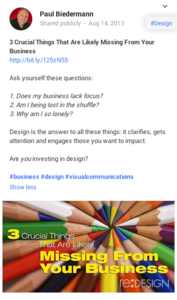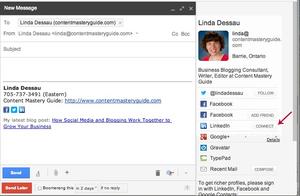 As we near the end of my blog post series about how blogging and social media work together, in this two-part post I’ll be exploring YouTube. For an expert view, I interviewed Anthony Idle from Local Video Marketing. Anthony shows local business owners how to use video in their online marketing even if they hate to be on camera and have zero budget.
As we near the end of my blog post series about how blogging and social media work together, in this two-part post I’ll be exploring YouTube. For an expert view, I interviewed Anthony Idle from Local Video Marketing. Anthony shows local business owners how to use video in their online marketing even if they hate to be on camera and have zero budget.
I met Anthony on LinkedIn via Des Walsh’s 30 Day Linking Blitz, a program designed to help people increase their effectiveness on LinkedIn.
1. How would you describe YouTube overall as a social networking site?
I believe that YouTube is a sleeping giant of a social media site. Currently, it’s flying under the radar and when people are on YouTube they don’t realize that they’re part of a social media site. They’re not aware of the power of YouTube to attract more clients and visitors, and grow their audience in their particular niche.
Let’s look at the facts: Facebook gets, daily, something like 620 million visitors. YouTube gets 500 million visits a day. It’s nearly as big as Facebook, it just doesn’t have the perception of being a social media site. I really think that the giant’s waking up. Recent moves to retire the video comments inside of YouTube signal that Google is making fresh attempts to socialize YouTube. I predict a Google+ comment system coming to YouTube.
2. What are YouTube’s unique characteristics for business and lead generation?
Like Facebook and most other social media sites, there are two approaches for lead generation – organic and paid. With the organic approach, it’s similar to blogging, in that you need to complete the meta data inside your video post.
Action: The keyword that you’re trying to rank for should be prominent in three places: It should be the first word in your video description, at the start of your title, and it should also be one of your tags. Tip: For best results, use 15 or so tags in your videos, not two or three as people typically use.
The second approach is paid lead generation and that includes two strategies. First, you can promote your video to specific audiences, much like a promoted post inside Facebook. But the other way that is really unique to YouTube is TrueView advertising.
What’s so powerful about TrueView advertising is that you only pay for a view if someone actually watches the ad (they’ll have the opportunity to skip the ad in the first five seconds). You end up with a confirmed list of people who are interested in what you offer.
3. What are the best methods and tools for businesses to deepen their existing relationships and find new connections? I call this the “Expand your network” step.
Now this is a big question and a large reason why I am on YouTube. I believe that the further up the funnel that you want to go, towards the top of your funnel where you’re educating and motivating your audience, the more important it is to get your face on camera.
Video accelerates the relationship-building process, because people do business with people they know, like, and trust. Trust is a function of credibility plus reliability plus intimacy, divided by self-interest. With video not only can you establish your credibility – how you look and how you present yourself – but the intimacy part is really, really important as people can see your face, hear your voice, understand the tone of your language, see your eyes and see your smile.
You’re leveraging your ability to create a relationship by putting your face on camera. So many people hate to put their face on camera, and so it’s a differentiator. When you do it, people pay attention, and they feel as though they know you. You can’t get that from text. It’s face time.
When I was running a sales team in the States the big salaries went to the sales reps who got face time. It’s the same thing with online marketing. The big results come from building face-to-face relationships, and that’s why I choose video over text.
Just like with blogging, building an audience on YouTube requires regular posting, e.g., weekly on Fridays at 5:00. All the big YouTube stars know exactly what time of the day they’ll release their next video, and so do their fans, who watch for and comment on the videos as soon as they’re posted.
Action: Try to respond to all comments. This is what makes YouTube social, and is extremely important for relationship building. A lot of people have their comments linked to Twitter so if they comment on a video, it automatically tweets and then you want to keep that conversation going on Twitter to amplify that as well.
Creating a YouTube channel is another tool for building relationships. Not only can you put up to four links up in your channel homepage art, every time that you publish a video you have the ability to share its link to your broader social media audiences.
Anthony raised some excellent points about how YouTube gives us a face-to-face connection with our audience as a way of increasing trust and deepening our relationships. In the next post, he’ll talk about how to use YouTube to curate and share relevant content for your niche, both on your blog and on social media.
Enjoying this series about social media and blogging? Check out the other posts here. You can also find my post about using Twitter for business at Social Media Today.
 For expert insights, I went to
For expert insights, I went to  Paul Biedermann is creative director/owner of
Paul Biedermann is creative director/owner of 


